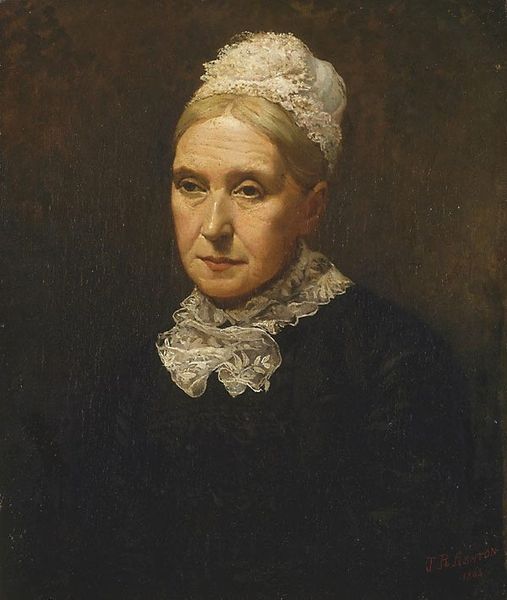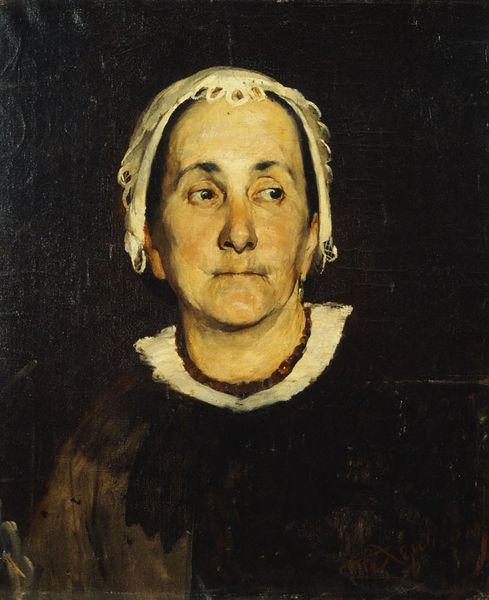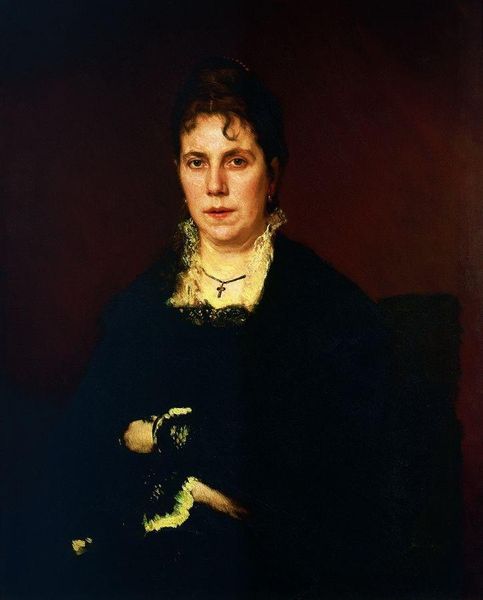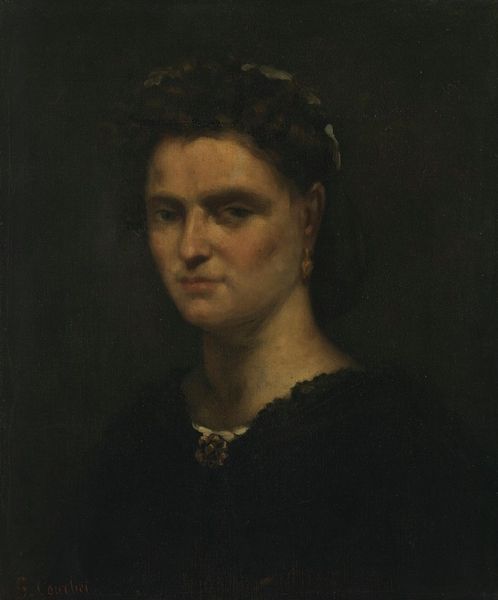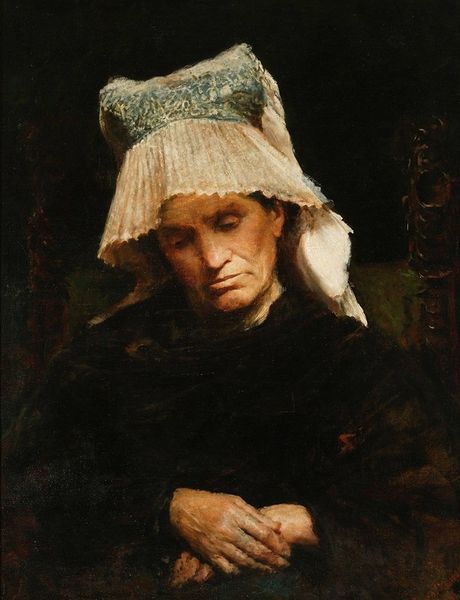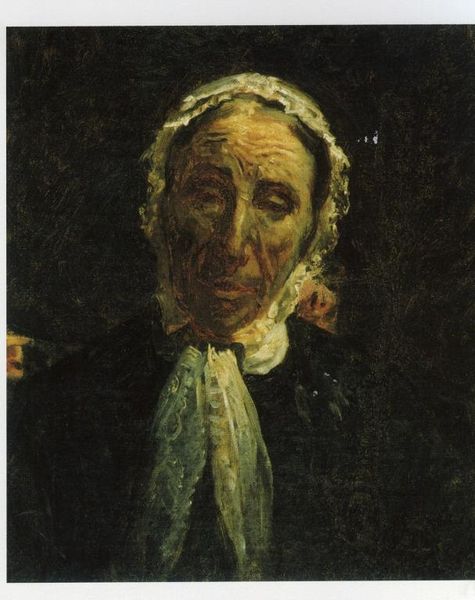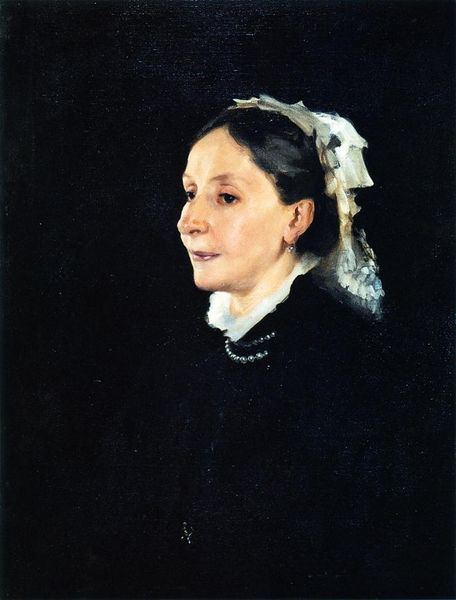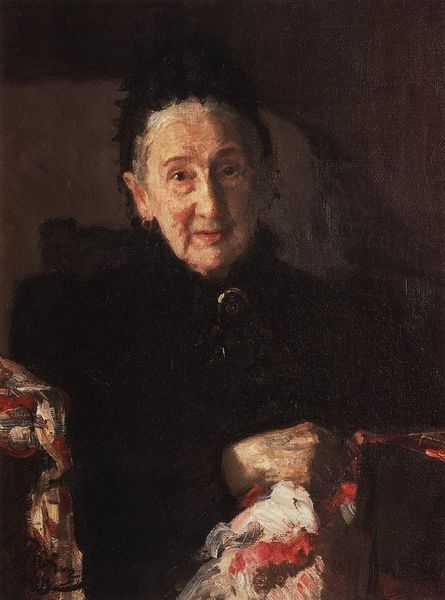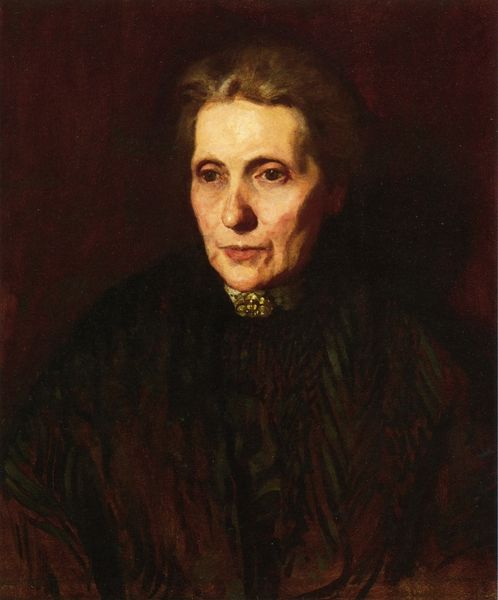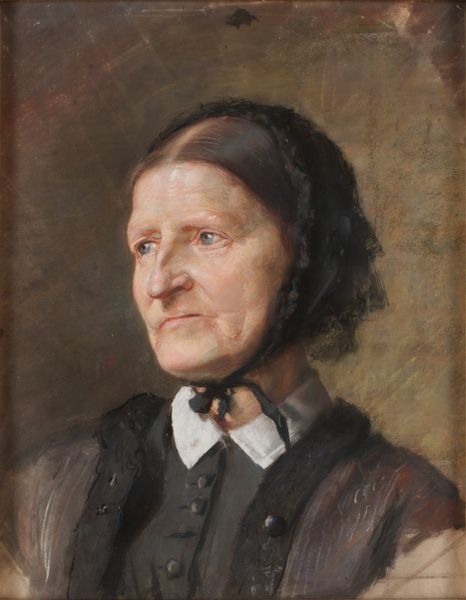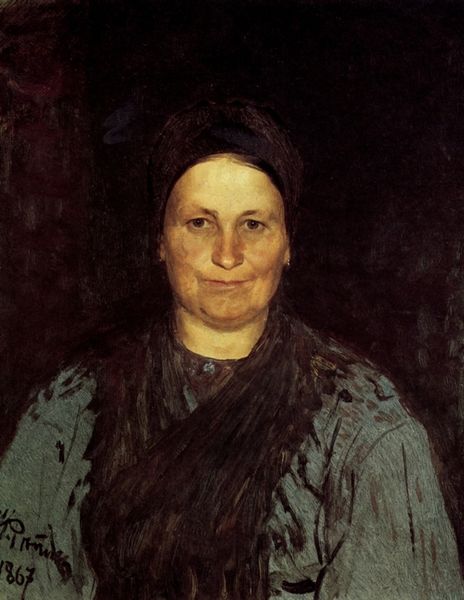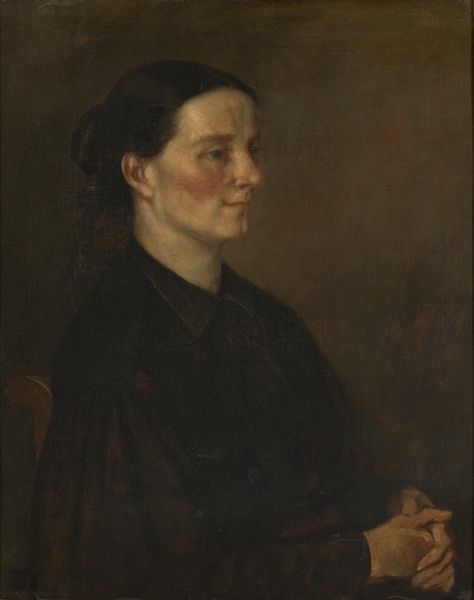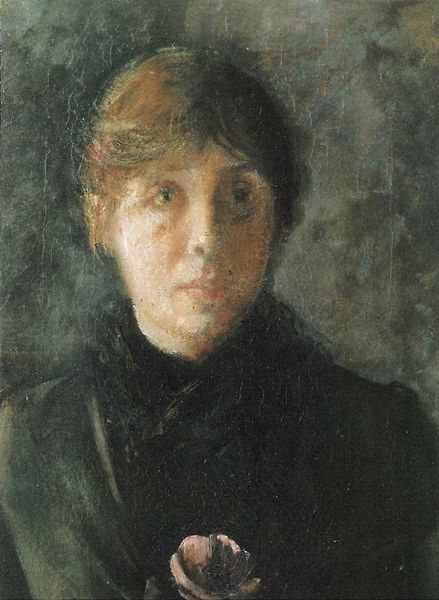
Dimensions: 60.96 x 50.8 cm
Copyright: Public domain
Curator: This is Thomas Eakins's "Portrait of Mrs. James W. Crowell," painted in 1875. It resides in a private collection. Editor: My immediate reaction is one of quiet observation, almost melancholy. It's a study in browns and blacks, isn't it? Somber and deeply thoughtful. Curator: Yes, Eakins achieves such depth with what appears a limited palette. We can almost feel the weight of the material, of the oil paint carefully layered to capture Mrs. Crowell's presence. Note how he painstakingly models the face. Editor: The dress and the brooch strike me as fascinating, hinting at both austerity and status. These were clearly items crafted, worn, and consumed – each thread and metal piece having its own origin story tied to industry and labor. I wonder, what kind of dye was used for that dark fabric? Curator: Indeed. There is an interesting interplay between the simple and the symbolic. Her gaze is direct, unflinching, but also vulnerable. It's not just about rendering her likeness; it feels like Eakins is trying to capture something of her spirit. The lack of idealization, especially compared to some portraiture of that era, feels radical. Editor: I agree, that lack of frills speaks volumes. No grand gowns or lavish backdrops, just a focus on the individual. This makes me wonder about Eakins' relationship with his subjects and what his stance would be on the portraiture market of that time. It wasn't easy being an independent artist! Curator: He certainly seemed driven by a need to represent things as they were, pushing against conventions. A kind of stark, unflinching realism—he wasn’t interested in beautifying or romanticizing, only bearing witness. Editor: And within that 'bearing witness' is embedded an unspoken dialogue between the artist, the sitter, and the eventual consumer. The very act of making and viewing implicates us all within the economic web surrounding this work. Curator: That's wonderfully put. This portrait serves as more than just a depiction; it becomes a reflection on mortality and the transient nature of human existence. It truly is a window into another time, inviting us to ponder our own place within the grand scheme. Editor: Yes, it provokes questions, doesn't it? About labor, consumption, representation, and our shared human experience. Food for thought, indeed.
Comments
No comments
Be the first to comment and join the conversation on the ultimate creative platform.
